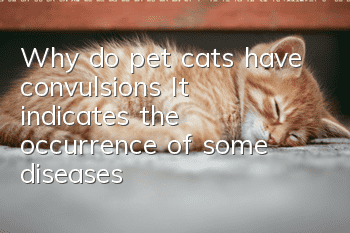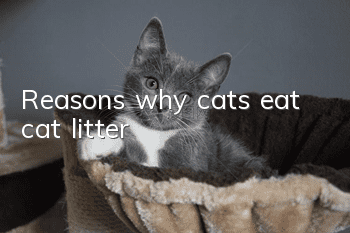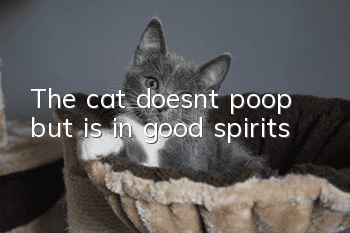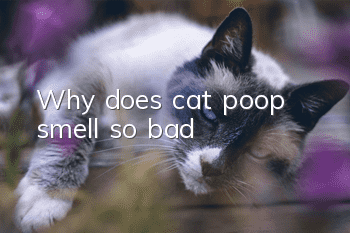Why do pet cats have convulsions? It indicates the occurrence of some diseases

Spasm is an indicative symptom for cats. It generally refers to the involuntary movement of smooth muscles. We have generally experienced this, such as hand cramps. During spasms, we will feel very painful because we are not affected by it. Control it, even if you want it to stop. Spasms also occur in cats from time to time. Many diseases can cause spasms. Spasms themselves are rarely fatal, but spasms often indicate the occurrence of some diseases and require our attention.
In fact, when it comes to spasms, we will think of another symptom, convulsions. In medicine, there are some differences between convulsions and spasms. We know that there are generally three types of muscle tissue, and the same is true for cats, which are divided into skeletal muscle, smooth muscle, and cardiac muscle. Convulsions generally refer to sustained tonic contractions of skeletal muscles. Spasm refers to the continuous strong contraction of smooth muscles. What we call cramps is the popular name. If a cat has convulsions, the owner will first think of whether it is a calcium deficiency. Indeed, part of the cause of convulsions is related to the concentration of calcium ions in the blood. Calcium ions are one of the indispensable elements in the biological body, and one of its functions is One is to maintain neuromuscular excitability. Once blood calcium is lower than physiological levels, neuromuscular excitability will immediately increase, causing spontaneous muscle contraction. However, we cannot generalize. There are many factors that cause cat spasms. Clinically, we Identification must also be made.
1. Congenital spasm
There are two types of congenital spasms. One is spasms caused by congenital epilepsy, which may be caused by biochemical defects in cerebral cortical neurons or subcortical neuron groups. The first spasm of congenital epilepsy usually occurs in cats between 6 months and 3 years old. The type of spasm is severe spasm, which lasts about 30-90 seconds. During the spasm, consciousness does not disappear, but it will shake uncontrollably and try to crawl to the owner.
Next is hydroventricular effusion. Cats with congenital hydroventricular effusion generally have low intelligence, uncoordinated movements, lethargy, enlarged heads, and involuntary spasms. The onset begins at 3 to 9 months old, and EEG Pictures and X-rays can help confirm the diagnosis.
2. Acquired spasm
There are many causes of acquired spasms in cats, especially some neurological diseases, which can cause spasms in cats, such as accidental trauma to cats. Cats are very naughty, and we often see them flying over walls and walls, but in This process is also very dangerous, and injuries can occur if you are not careful. If the cat accidentally falls and damages its skull, it will cause spasms and unconscious sustained movement disorders, which often occur 3 to 4 months after the injury.
There are also encephalitis, brain tumors, and toxoplasmosis. Here is a special mention of toxoplasmosis. Toxoplasma is a parasite that cats are extremely susceptible to, and it is also susceptible to humans. Humans serve as hosts, so cats must be bathed and cleaned regularly.When taking a cat out, do not let the cat touch the dirty things on the roadside. If you suspect that the cat has Toxoplasma gondii, you must deworm it, otherwise you will be in trouble if you are also infected. Transmission of toxoplasmosis among cats involves congenital vertical infection from an infected female cat or transmission after ingestion of infected oocysts. Cats living outdoors are at risk of becoming infected by hunting and ingesting intermediate hosts or mechanical vectors such as beetles, earthworms, and rodents that carry T. gondii. In addition, kittens can also be infected by eating raw meat.
3. Drug-induced spasms
Drug-induced spasm, to put it simply, is drug poisoning in cats. What drugs can cause neurological symptoms in cats? For example, organophosphorus, carbon tetrachloride, and some cyanides. Organophosphorus poisoning is often used in some killer drugs. The use of insecticides will produce pesticides. Some owners bought some insecticides with high organophosphorus content and heard others say they were very effective. However, when they were sprayed at home, the insects were killed and the cats went crazy. Therefore, we must be clear when choosing pesticides. Pesticides containing organophosphorus are not suitable for home disinfection because they are very toxic and may poison us. Carbon tetrachloride can be found in some paints, pesticides, and dry cleaning agents. It is harmful to cats when used together. High concentrations of carbon tetrachloride can cause cats to become overly excited, tremble for a long time, and have intermittent tonicity. Spasmodic attacks.
Finally, if the cat has a spasm, we must first place the cat in a place where it cannot touch furniture and walls, wrap the whole body in a towel, and wait for the spasm to stop. Never put your fingers or other objects into the cat's mouth at this time. After the cat calms down, contact the doctor for advice. If the spasm recurs or lasts for more than 10 minutes, go to the hospital immediately.
- How to train a cat to go to the toilet on its own?
- How to train an Occi cat not to bite? Change your living habits!
- Why does the cat’s butt stink?
- What should pregnant cats eat to supplement their nutrition?
- How to check if a cat has ringworm?
- There are good ways to choose and buy good and cheap cat food
- How often should you use catnip? Is catnip addictive for cats?
- What is the smell that cats hate the most?
- How is feline distemper spread and what are its symptoms?
- Where do fleas go after cats are dewormed?



